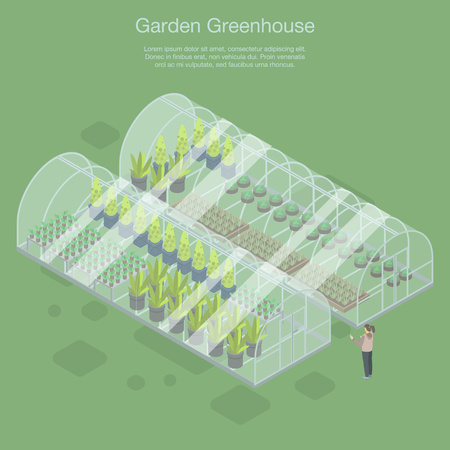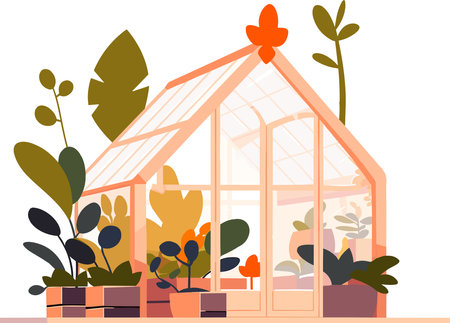Introduction to Terrace Gardening in India
Terrace gardening has blossomed into a vibrant trend across Indian cities, transforming concrete rooftops into lush green oases. With urban spaces becoming increasingly cramped and the demand for greenery on the rise, many Indian households are embracing terrace gardens as a practical solution to space constraints. The diverse climate across India—from the humid coasts of Chennai and Mumbai to the dry heat of Delhi and Jaipur—means terrace gardeners must be mindful of local weather patterns while planning their flower beds. Despite these challenges, the joy of growing colourful flowers and creating eco-friendly spaces has led to a surge in community interest. Whether in bustling metros like Bengaluru or smaller towns, terrace gardening is now seen as a symbol of sustainable urban living, reconnecting people with nature right at home.
2. Selecting Flowers Suitable for Indian Climate
Choosing the right flowers is crucial for a thriving terrace garden in India, where weather conditions can vary significantly from North to South and East to West. Indias tropical and sub-tropical climate supports a wide range of flowering plants, but selecting varieties that flourish in your region will ensure a vibrant display throughout the year. Here’s a practical guide to help you pick flowers best suited for Indian terraces.
Understanding Indian Climate Zones
Indias climate includes hot summers, monsoons, and mild winters in most regions. Some cities experience extreme heat (like Delhi or Chennai), while others enjoy cooler or more moderate temperatures (like Bangalore or Shillong). Knowing your local weather pattern is the first step in selecting resilient flowering plants.
Popular Flowering Plants for Indian Terraces
The following table showcases some of the most popular and easy-to-grow flowering plants that can withstand typical Indian weather conditions:
| Flower Name | Best Season | Climate Suitability | Special Care Tips |
|---|---|---|---|
| Marigold (Genda) | Year-round, especially winter | Panf-India, heat & drought tolerant | Requires full sun; deadhead regularly for more blooms |
| Hibiscus (Gudhal) | Spring to autumn | Tropical & coastal regions | Needs daily watering in summer; prefers partial shade in harsh sunlight |
| Bougainvillaea | Year-round, peak in summer | Drought-prone, warm climates | Minimal watering once established; prune to shape and encourage new growth |
| Jasmine (Mogra/Chameli) | Summer and monsoon | Panf-India, loves humidity | Provide support for climbing; regular pruning helps bushier growth |
| Zinnia & Petunia (Seasonal) | Winter & spring annuals | Northern plains & hilly regions during cool months | Sow seeds post-monsoon; remove spent flowers promptly |
Tips for Choosing Flower Varieties Locally
- Visit nearby nurseries: Local plant sellers often stock varieties proven to thrive in your city’s microclimate.
- Consider indigenous species: Native flowers like Ixora, Kaner (Oleander), and Periwinkle are low-maintenance and attract pollinators.
- Select a mix of perennials and annuals: Perennials like hibiscus and jasmine offer year-round greenery, while seasonal blooms add bursts of colour.
Cultural Touch: Flowers in Indian Homes
Certain flowers like marigold and jasmine not only beautify your terrace but also hold cultural significance. Marigolds are used in pooja thalis and festivals, while fresh jasmine garlands are common in South Indian homes. Growing these plants ensures you always have fresh flowers for rituals and decoration.
Selecting climate-suitable flowers is the foundation for a successful terrace flower garden. In the next section, we’ll discuss how to create ideal soil mixes tailored to these chosen blooms for healthy growth and abundant flowering.

3. Preparing Your Terrace: Essentials and Vastu Tips
Setting up your terrace is the foundation of a thriving flower garden, especially in Indian conditions where climate and traditions play important roles. Here’s a step-by-step guide to prepare your space efficiently while keeping Vastu Shastra principles in mind for harmony and positive energy.
Step 1: Waterproofing Your Terrace
Before placing any pots or soil, ensure your terrace floor is properly waterproofed. Indian monsoons can be harsh, so apply a high-quality waterproof membrane or coating. This prevents water leakage into your home and protects the building structure.
Step 2: Choosing the Right Soil Mix
The success of your terrace garden depends largely on the soil quality. Prepare a nutrient-rich mix using equal parts red soil, organic compost (like cow dung or vermicompost), and river sand for good drainage. Avoid using only local black soil as it may retain excess moisture and cause root rot.
Step 3: Ensuring Proper Drainage
Drainage is vital in Indian climates to prevent waterlogging during heavy rains. Use pots with holes at the bottom, and place a layer of broken earthen pots or gravel before filling them with soil. If you are creating raised beds, install proper drainage channels along the edges of your terrace to direct excess water away safely.
Step 4: Vastu Shastra Recommendations
Vastu Shastra, an ancient Indian science of architecture, can help channel positive energy into your garden. Ideally, set up your main flower beds towards the north or east side of the terrace for maximum sunlight and prosperity. Place heavier pots and planters towards the southwest corner, leaving the northeast open for lighter plants or a sacred Tulsi (holy basil) plant for good vibes.
Community Tip:
Many urban gardeners in India use lightweight grow bags instead of traditional pots to reduce structural load on terraces—this is both practical and cost-effective!
Checklist Before You Start Planting:
- Waterproof layer checked?
- Quality soil mix ready?
- Pots/containers with drainage?
- Vastu directions planned?
With these essentials in place, you’re now ready to bring vibrant colour and positivity to your Indian terrace garden!
4. Planting and Arranging Your Flower Garden
Arranging your terrace flower garden in India is both an art and a science. With the right planning, you can maximize space, ensure all plants get enough sunlight, and create a garden that blooms year-round while reflecting Indian traditions.
Tips for Arranging Pots and Planters
- Utilize Vertical Space: Use wall-mounted planters, hanging baskets, and multi-tiered stands to make the most of limited terrace area.
- South or East Facing: Place sun-loving flowers like marigolds (genda), zinnias, and petunias where they receive at least 5-6 hours of sunlight daily. North-facing spots are best for shade-tolerant varieties like impatiens.
- Group by Height: Arrange taller pots at the back (near walls or railings) and shorter ones in front. This allows every plant to catch sunlight and makes your garden visually appealing.
- Easy Movement: Keep heavier pots on trolleys or stands with wheels for easy shifting during strong winds or changing seasons.
Mixing Flowering Plants for Continuous Blooms
Select a combination of annuals and perennials to ensure flowers throughout the year. Here’s a handy table to guide your choices:
| Season | Suggested Flowers | Traditional Use |
|---|---|---|
| Winter (Nov-Feb) | Pansies, Petunias, Dahlia, Calendula | Pooja decorations, festive rangolis |
| Summer (Mar-Jun) | Zinnia, Sunflower, Marigold, Portulaca | Mala making, home mandirs |
| Monsoon (Jul-Oct) | Balsam, Torenia, Hibiscus (Gudhal) | Offerings during Shravan & festivals |
Incorporating Indian Aesthetics
- Traditional Colours: Mix bright orange marigolds with white jasmine (mogra) or champa for classic Indian vibes.
- Kullads & Earthen Pots: Use clay pots or old brass utensils as planters to add rustic charm and help roots stay cool in hot climates.
- Cultural Symbols: Arrange flowers in circular patterns or rangoli-inspired layouts for festive occasions.
- Aromatic Flowers: Add fragrant varieties like raat ki rani (night-blooming jasmine) and parijat near seating areas for an authentic Indian terrace experience.
Quick Tips for Beginners
- Avoid overcrowding; leave enough gap between pots for air circulation.
- Add mulch or pebbles on top of soil to retain moisture—very helpful during hot Indian summers!
- Label your planters with plant names using recycled materials for easy identification.
A thoughtfully arranged terrace flower garden not only maximizes space but also celebrates India’s rich floral heritage and traditional beauty. Start experimenting with different layouts and seasonal combinations to find what brings the most joy—and colour—to your home.
5. Watering, Fertilizing, and Daily Care
Understanding Indian Weather and Watering Needs
India’s climate varies greatly from region to region, but most areas experience a hot summer and a dramatic monsoon season. For terrace flower gardens, it is important to water early in the morning or late in the evening to minimize evaporation. During peak summer months, most flowering plants require daily watering—ensure that the top 1-2 inches of soil feel moist but not soggy. In cities like Mumbai or Chennai, where humidity is high, check for fungal issues caused by excess moisture.
Monsoon Management: Too Much Water?
Monsoon can be both a blessing and a challenge. Make sure your pots have proper drainage holes; use broken terracotta pieces at the bottom of containers to prevent root rot. Move sensitive plants like petunias or marigolds under a shade net or temporary shelter during heavy rains. Regularly check pots for stagnant water to avoid mosquito breeding—a common issue in Indian urban homes.
Fertilizing with Local Wisdom
Organic fertilizers work best for terrace gardens in India. Use homemade compost from kitchen waste (sabzi peels, fruit rinds) or well-rotted cow dung (gobar) once every 15 days during the growing season. For an extra boost, sprinkle neem cake powder or diluted buttermilk around the roots—both are age-old Indian practices known to enrich soil health and deter pests naturally.
Daily Care Routines for a Healthy Garden
- Deadheading: Remove dried flowers regularly to encourage new blooms.
- Pest Control: Spray neem oil solution weekly on leaves to manage aphids and mealybugs.
- Airing: Shift pots occasionally so all plants get equal sunlight and air circulation.
- Cultural Practices: Talk to your neighbours—exchange tips about what works well in your local climate!
Quick Tip
If you notice yellowing leaves, reduce watering and check if roots are waterlogged—a common mistake during monsoon months. With mindful care tailored to India’s seasons, your terrace flower garden will thrive beautifully all year round.
6. Managing Pests and Common Issues Organically
In Indian terrace gardens, pests like aphids, mealybugs, and fungal diseases can quickly affect the health of your flowers. Instead of turning to chemical pesticides, which may harm both the environment and beneficial insects, consider adopting traditional Indian remedies that are both safe and eco-friendly.
Neem Oil: The Desi Wonder Solution
Neem oil is a time-tested solution in Indian households for managing garden pests. Extracted from the neem tree (Azadirachta indica), this natural oil acts as an effective repellent against a wide range of insects. To prepare a neem spray, mix 1-2 teaspoons of neem oil with a litre of water and add a few drops of mild soap. Spray this mixture on affected plants during early morning or late evening for best results. Neem not only controls pests but also helps boost plant immunity.
Buttermilk Spray for Fungal Protection
Another handy remedy is buttermilk spray, which many Indian gardeners use to tackle powdery mildew and other fungal infections. Dilute one part fresh buttermilk with three parts water and spray it on the leaves. The natural acids present in buttermilk help suppress fungal growth without harming your flowers or the soil ecosystem.
Additional Tips for a Healthy Terrace Garden
Encourage ladybirds (ladybugs) and spiders by planting marigold or coriander, as they naturally feed on harmful pests. Regularly remove dead leaves and ensure good air circulation around your pots to prevent disease build-up. Practise crop rotation—avoid growing the same plant in the same spot every season—to disrupt pest life cycles.
By embracing these simple, organic practices rooted in Indian tradition, you can keep your terrace flower garden healthy, vibrant, and safe for your family and the local environment.
7. Celebrating and Sharing Your Terrace Garden
Community Engagement: Growing Together
A terrace flower garden is not just a personal retreat but also an opportunity to connect with your local community. In Indian cities, neighbours often share a special bond, and your blooming terrace can become a source of inspiration for others. Invite friends, family, and neighbours to visit your garden, exchange gardening tips, or even organise small weekend workshops on composting or container gardening. Many Indian housing societies have WhatsApp groups—use these platforms to start discussions about urban gardening or to arrange plant swaps.
Festive Decorations for Diwali and Holi
Indian festivals are vibrant and full of colour, making your terrace garden the perfect backdrop for celebrations. For Diwali, decorate your space with marigold garlands (genda phool), diyas (oil lamps), and fairy lights strung between pots of petunias and jasmines. During Holi, let your garden burst with a riot of colours—plant cosmos, zinnias, and bougainvillea in advance so they bloom during the festival. You can even use fresh flowers from your garden to make natural rangoli designs at the entrance or on tabletops, adding an eco-friendly touch to your celebrations.
Sharing Flowers and Seeds
One of the joys of gardening in India is the tradition of sharing. When your plants produce extra seeds or when you have abundant blooms, consider gifting them to neighbours or joining local gardening groups such as RWAs (Resident Welfare Associations) or city-based horticulture clubs. Exchanging seeds of native varieties like hibiscus or aparajita helps preserve indigenous flora while strengthening community ties. Hosting a small “seed mela” or flower exchange event on your terrace is a wonderful way to encourage others to start their own gardens and promote biodiversity in your neighbourhood.
Building Lasting Connections Through Gardening
Your terrace garden can be more than just a private sanctuary—it can be a celebration of Indian culture, festivals, and community spirit. By sharing knowledge, plants, and festive joy, you contribute to building greener cities and nurturing friendships that last beyond the seasons.

